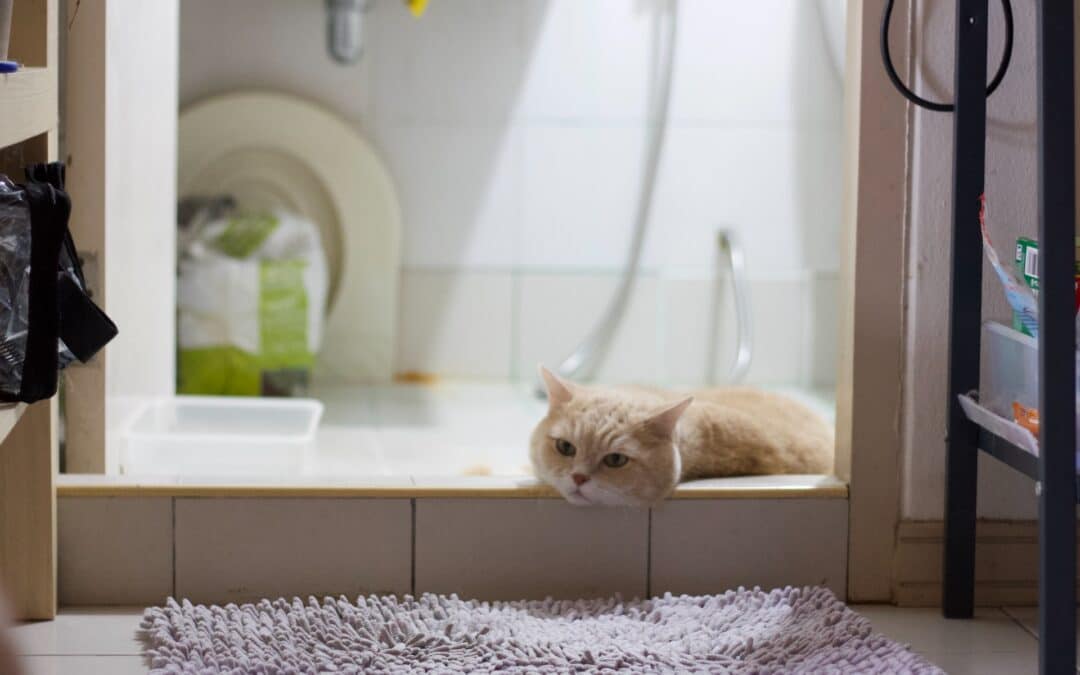Is your cat failing to use the litter box? They might be giving you a not-so-subtle hint to scoop it out, or they could be trying to clue you in to a more serious problem. Urinating outside the litter box is often one of the signs of FLUTD, or feline lower urinary tract disease. If your cat suffers from this painful condition, the vets at East Valley Animal Hospital can provide diagnosis, treatment, and relief.
What Is Feline Lower Urinary Tract Disease (FLUTD)?
Feline lower urinary tract disease is a condition that causes painful urination due to a blocked or infected urethra. FLUTD can occur in both male and female cats of any age, although it’s most common in older, neutered males. It can stem from several different causes, so it’s important to see a veterinarian to get a specific diagnosis.
Causes of FLUTD include:
- Bladder stones
- Urethral blockage
- Bacterial infections
- Inflammation of the bladder
- Diabetes
- Hyperthyroidism
Is My Cat at Risk for FLUTD?
Feline lower urinary tract disease is a common problem in older cats, particularly in neutered males. Cats may have a higher risk if they are middle-aged or elderly, if they are overweight, or if they eat dry food only. If your cat falls into one of these high-risk categories, keeping them hydrated can help reduce their chances of developing FLUTD.
Make sure you always provide plenty of fresh drinking water. Most cats prefer to have more than one source of water available—try giving your cat a second water dish in a separate room. Certain cats are suspicious of still water; if your cat will not drink from a bowl, you might want to get them a cat drinking fountain instead. Supplementing their diet with wet food can also help.
Signs of FLUTD
Recognizing when a cat is in pain isn’t always easy. Take note of any behavioral changes—if your cat urinates on the kitchen floor, or in the bathtub, or anywhere besides their litter box, they may be trying to tell you that something is wrong. If you notice any blood in their urine, or any of the other symptoms below, make a veterinary appointment right away, because these could be signs of FLUTD.
Symptoms of feline lower urinary tract disease include:
- Difficult or painful urination
- More frequent urination
- Blood in the urine
- Urinating outside the litter box
- Over-grooming the genital area
- Straining or failing to urinate
- Aggression or irritability
FLUTD Treatment and Care
The treatment for FLUTD will depend on the underlying cause. Your vet will need to conduct a urinalysis to check for the presence of crystals (bladder stones), inflammation, and infection. To treat FLUTD, your cat may need a special diet, fluid therapy, antibiotics, or surgery. Urethral obstructions, the most serious type of FLUTD, can be life-threatening and qualify as a medical emergency. If your cat is unable to urinate, contact East Valley Animal Hospital for emergency care.
Get Treatment for FLUTD as Soon as Possible
Have you noticed any signs of FLUTD in your cat? Make an appointment at East Valley Animal Hospital today. As your local vet in Gilbert, we are committed to keeping the pets in our community healthy and happy. Don’t let your cat suffer unnecessarily—call us at 480-568-2462 or send us a message so we can give your cat the treatment they need to find relief.
Photo by mistermon on Unsplash used with permission under the Creative Commons license for commercial use 6/19/2023.

